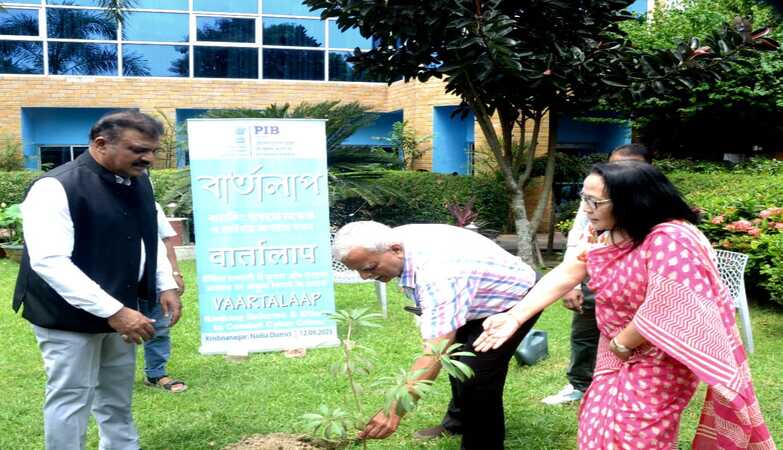Biswabrata Goswami
MIDNAPORE, 7 JULY: In a rare conservation success, the forests of Junglemahal are echoing with the playful trumpets of baby elephants—a sound that has become increasingly common in recent years. Once part of transient migratory routes, the jungles of Jhargram and its neighbouring districts are now witnessing an elephant population boom that has stunned even veteran forest officers.
According to the Forest Department, the number of elephants across Jhargram, West Midnapore, Bankura, and Purulia has increased from 194 in 2017 to 224 in 2025—marking a 15% growth in just eight years. The majority of these elephants—nearly 65%—now reside in Jhargram district alone, indicating a significant shift in habitat preference.

“This is a very positive development,” said Sandeep Sundriyal, Chief Wildlife Warden and Principal Chief Conservator of Forests (Wildlife). “It shows that the elephants are finding these forests safe and resource-rich enough to settle, reproduce, and raise their young.”
Wildlife experts attribute the population surge to the region’s ecological abundance. From dense undergrowth that offers cover and shade to a steady supply of water and food, Junglemahal provides the ideal setting for elephants to thrive. Researcher Dr. Pravat Kumar Shit, who has studied forest ecology in the region, pointed to at least 13 species of wild plants that sustain these herds, in addition to crops like paddy, potatoes, and sugarcane from nearby farmlands.
The Forest Department’s initiatives—especially the construction of ponds within forest beats—have ensured a year-round water supply. This contrasts sharply with the Dalma region in Jharkhand, where drying water bodies are forcing elephants to migrate.
“Here, they have everything—water, food, shelter,” said Dr. Chanchal Dutta, a wildlife veterinarian. “And thanks to better nutrition, we’re seeing higher birth rates and healthier calves.”
Elephants, which typically give birth once every three years, can continue reproducing up to the age of 65. With pregnancies lasting nearly two years, the presence of calves under three years old in several herds signals a healthy reproductive cycle. In Nayagram and Sankrail alone, forest officials have documented around 10 calves below the age of five.

Forest officials have also observed a change in migratory patterns. “Earlier, elephants would move between Bengal and Jharkhand. Now, they are going toward Odisha but returning quickly—often within a month,” said Jhargram DFO Umar Imam. Long canal networks in Odisha act as barriers to movement, encouraging the elephants to stay in the familiar, safer terrain of South Bengal.
“Even on Thursday, six new calves were spotted in the Jhargram division,” Imam noted. “It’s clear they’re choosing to stay and breed here.”
Of the 224 elephants recorded, around 44 are in the core Jhargram range, with another 100 in Nayagram and Sankrail. The remaining are scattered across Bankura, Purulia, and West Midnapore.
While forest officials are celebrating the baby boom, they’re also preparing for the challenges that come with it. Increasing interaction between elephants and humans—particularly over crop raids—remains a concern.
“Our goal is to strike a balance between conservation and community safety,” said Imam. “The signs are hopeful, but this growth brings responsibilities too.”
As herds continue to multiply and the forests ring with the calls of new life, Junglemahal has emerged as a rare example of how elephants and humans can still coexist—offering a glimmer of hope for India’s National Heritage Animal in an increasingly fragmented natural world.







